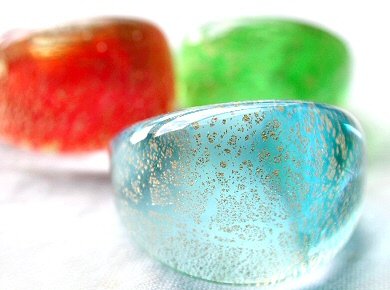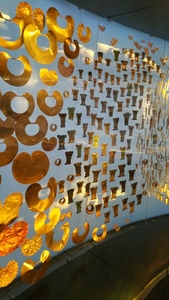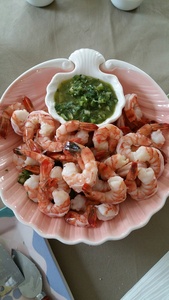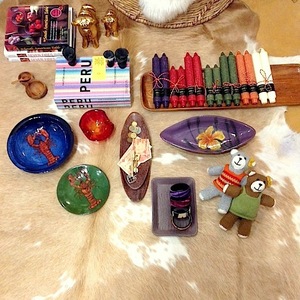Amazing Design: What Makes Murano Glass So Special?
Thursday, July 23, 2015

Perhaps it's my Italian roots, but I've always been drawn to art glass, and in particular, to those pieces I've now come to know as vintage Murano from Italy. For some of us, Murano glass is seen as a beautiful decorative tabletop piece that's admired for its pristine color and design. Many of these tabletop pieces tend to be on the chunky side, some bordering on garish or even ugly, in a uniquely Italian kind of way.
Murano glass is seen as a one of a kind collector’s item that you can't just find anywhere. Having started many generations ago on the Venetian island of Murano, the glass is rather difficult and complex to make. Besides the tabletop bowls, platters, and sculptural art pieces, Murano is also quite well known for the glass used to make chandeliers and glass beads for jewelry. Due to its unique process involved, it is not something that can be generally mass produced and found everywhere. As a result of its complexity, the artisans who create these masterpieces keep the secrets of making them heavily guarded and it is usually a tradition that is passed down from generation to generation, from father to son. These factors make for its collectible status, more so than any other source of art glass.

Most pieces have a distinctly handmade appearance where often the thick glass appears to have been pulled apart by hand. Many combine 2 and even 3 different colors of glass, often unexpected combinations. Popular styles of Murano glass bowls, platters and display pieces include the so called crackle, bubble, and gold or silver leaf design.
The crackle design is created by adding colored dust mixed with gold leaf to the molten glass. The hot glass is then placed in cold water, which causes the glass to "explode" and produce the unique cracks you see.

The "bullicante,” or bubble design, which originated in the 1900’s, is created by blowing glass into a metallic mold which has rows of tiny spikes that impress small hollows on the surface of the glass. The object is then dipped back into the melting pot, where it is covered by another layer of glass that traps tiny bubbles in the hollows, creating a uniform bubble pattern.

The gold or silver leaf design is formed with tiny precious metal leaves, which are extremely thin sheets of metal made of pure gold or pure silver. To add to the glass, the leaf is placed down gently on a flat surface where the hot shapeless glass is rolled over the leaf to pick it up. The leaf then sticks to the glass and after the glass is blown, the metal leaf splits and spreads over the entire surface of the glass object. When it's finished, the interior of the piece is seemingly covered in sparkling fine gold or silver dust. Light hitting such pieces in just the right way make for a most dramatic artistic and sculptural display.


Because each glass piece is completely different, Murano glass is unique to every craftsperson, making it a top valued collector's item. I think I would collect these pieces even if I didn't own a retail and online home decor store. They're special and are becoming harder and harder to find, especially the vintage ones with prices increasing. We carry a few pieces at a time as we find them on our travels, often from European or Latin American dealers. Take a look, and maybe get your very own under our Tabletop section at https://www.disenobos.com/collections/tabletop and see a gallery of our current collection below. I hope you appreciate them as much as we do! Buon giorno, e buona sera!
Cheers,
Frank Campanale













